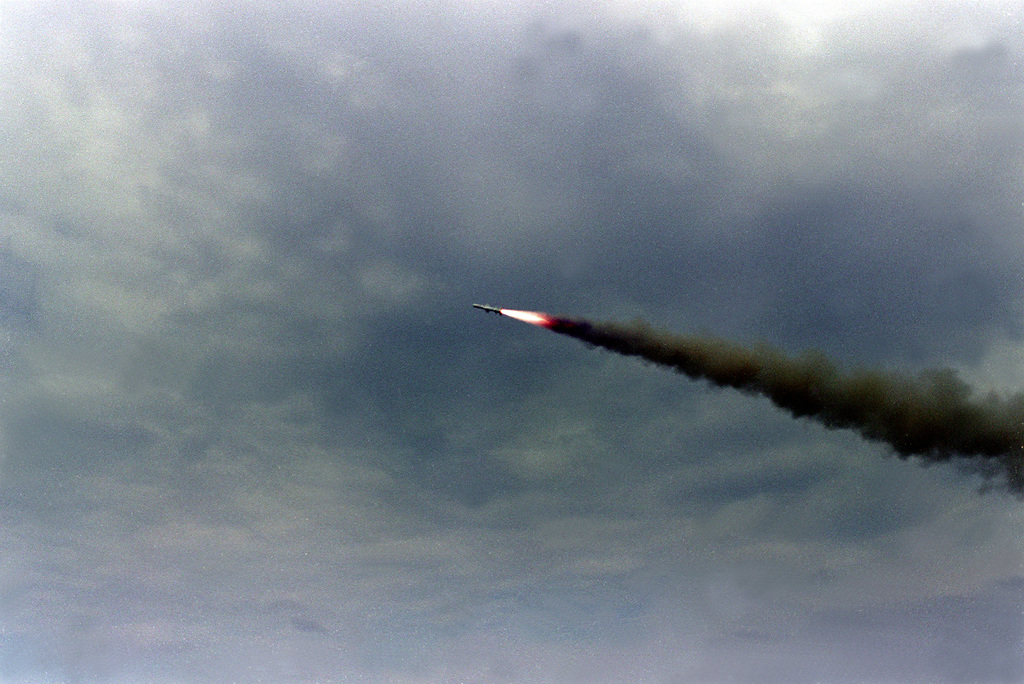
Japan has initiated a project within its Defense Buildup Program to deploy a novel coastal anti-ship cruise missile, as part of its ongoing efforts to enhance its defensive capabilities. Termed the “new SSM” (surface-to-ship missile), this initiative is part of a series of missile development projects announced by Japan’s Ministry of Defense, primarily aimed at fortifying its island defense strategy. The primary objective of this endeavor is to safeguard Japan’s southern islands, including the Senkaku Islands, and discourage potential acts of Chinese military aggression in the region encompassing the First Island Chain.
According to an official statement released by the Japanese Ministry of Defense on June 6, the contract for the development of the new cruise missile has been awarded to Kawasaki Heavy Industries (KHI) on June 2. The statement indicates that the research and development phase for the missile, focusing on essential technologies for advanced anti-ship guided missiles tailored for island defense, will span from 2023 to 2027. While the precise value of the contract is undisclosed in the statement, Japan’s Fiscal Year 2023 budget has allocated approximately $257 million towards research dedicated to a novel multi-mission anti-ship missile, featuring enhanced stealth characteristics and a reduced radar cross-section.
Additionally, the Japanese Ministry of Defense, in its press release, unveiled the first visual depiction of the missile through a cutaway illustration, providing insight into the placement of its warhead and two distinct sensors located within its nose. The artwork also showcases the missile, which utilizes an air-breathing propulsion system, equipped with retractable wings and four tail fins/stabilizers.
It is important to acknowledge that Kawasaki Heavy Industries has been diligently working on a prototype for an extended-range cruise missile, adhering to the specifications outlined by the Japan Self-Defense Forces (JSDF). In March, a scale model of the company’s “island defense anti-ship missile” was publicly showcased at the DSEI Japan 2023 exhibition held in China.
KHI’s prototype missile demonstrates remarkable alignment with the general attributes of the aforementioned “new SSM,” if not surpassing the expectations implied by its nomenclature. Citing KHI officials, Naval News states that the “island defense anti-ship missile” developed by KHI is designed for long-range operations while maintaining high maneuverability. It can be employed from various platforms, including warships, aircraft, and land-based launchers, with potential adaptations for submarine-based launches. The missile will be propelled by KHI’s newly developed turbofan engine, known as the KJ300.
Furthermore, Janes reports that KHI’s missile will utilize an inertial navigating system (INS) and global positioning system (GPS) for navigation during its cruise phase, while employing an infrared (IR) and/or a radio frequency (RF) seeker for precise terminal guidance. The integration of both infrared and radar seekers will enhance the missile’s resilience against countermeasures such as decoys and jamming, in both the infrared and radio frequency domains, significantly augmenting its probability of successfully neutralizing its target.
The “island defense anti-ship missile” boasts a length ranging from six to ten meters (approximately 20 to 33 feet), an impressive operational range exceeding 1,000 kilometers (just over 621 miles), and is capable of achieving a subsonic speed of Mach 0.8. Kawasaki Heavy Industries (KHI) emphasizes the modular design of the missile, enabling versatile payload configurations to support various mission requirements. These configurations may include land attack, electronic warfare, and reconnaissance capabilities.
Since 2017, Japan has been actively pursuing the development of new land attack and anti-ship cruise missiles with ranges comparable to the Tomahawk Land Attack Missiles (TLAM), which can reach around 1,000 miles. This drive primarily stems from escalating tensions on the Korean Peninsula, where North Korea has been advancing its nuclear and missile programs. China’s activities in the region have also influenced Japan’s pursuit of advanced missile capabilities. Additionally, Japan has shown interest in equipping its future submarines, as well as its existing submarine fleet, with long-range cruise missiles, expected to exceed 620 miles in range. These missiles are projected to be deployed in the latter half of the 2020s.
Furthermore, Japan has sought to enhance the range of its Type 12 surface-to-ship missiles, which are currently employed for coastal defense. The upgraded version of this missile is anticipated to have a minimum range of 900 kilometers (just under 560 miles), with a maximum range surpassing 1,200 kilometers (just over 745 miles). This represents a substantial increase compared to the original Type 12 missile, which had a range of only 200 kilometers (just over 124 miles).
In recent developments, Japan has initiated a procurement endeavor to acquire 400 Tomahawk cruise missiles from the United States, beginning in April of the current year.
The designation of a “new SSM” specifically designed for “island defense” underscores Japan’s territorial disputes with both China over the islets in the East China Sea and with Russia over Sakhalin. Japan places significant importance on protecting the disputed islands within the First Island Chain, an area in the Pacific delineated by the first line of archipelagos extending from mainland East Asia. The Senkaku Islands, in particular, hold strategic significance and are likely targets in a potential conflict with China.
Japan’s pursuit of cruise missiles, such as the new coastal anti-ship missile, is a clear indication of Tokyo’s recognition of the need to bolster its defensive capabilities in response to China’s expanding naval strength, which poses a potential threat to regional stability. This investment in advanced weaponry aligns with Japan’s broader strategy to deter Chinese military aggression, as well as to address the escalating tensions with neighboring countries like North Korea and China. This commitment is reflected in Japan’s record defense budget for Fiscal Year 2023, amounting to 114.4 trillion yen ($863 billion).
It is worth noting that Japan has been actively enhancing its military capabilities in various domains, including the development of aircraft carriers and hypersonic missiles. These initiatives signify Tokyo’s proactive approach to safeguarding its national security interests.
However, the pursuit of cruise missiles raises questions regarding the extent to which Japan adheres to its long-standing “pacifist” identity, as enshrined in its constitution. While Japan has justified its procurement of cruise missiles as essential for self-defense purposes, there have been indications of a potential shift in posture. In 2014, Japan declared that Article 9 of its constitution, which renounces the use of force in resolving international disputes, would not preclude “collective self-defense” or assisting allies under attack. This signaled a potential departure from the country’s traditionally defensive stance. Moreover, the debate surrounding the revision or elimination of Article 9 has gained traction in recent years, particularly in light of perceived threats from China and North Korea.
Against this backdrop, the decision to field a new coastal anti-ship cruise missile reflects Japan’s evolving defense priorities and the nation’s evolving stance towards a more assertive defensive posture.




